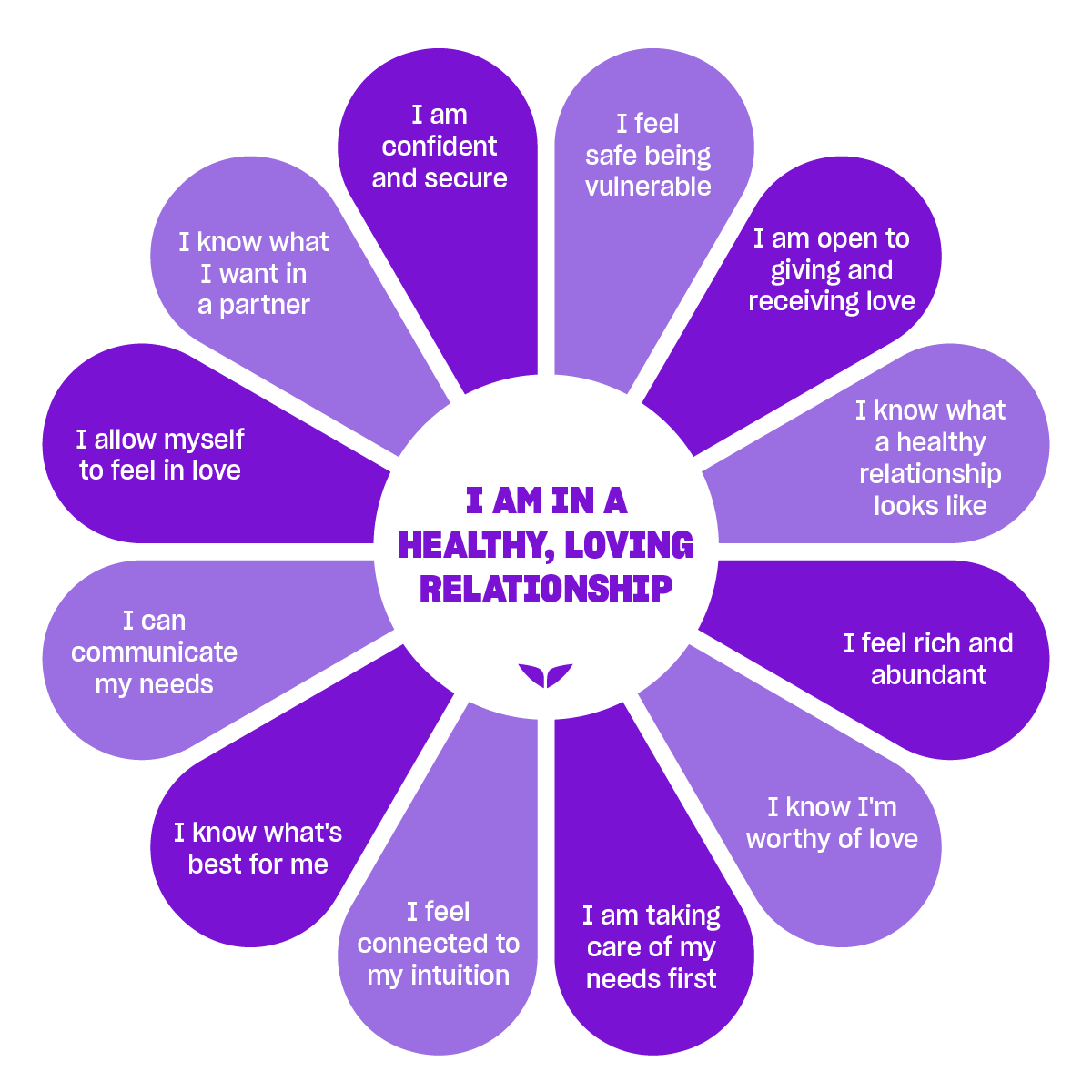In a world bombarded with the Law of Attraction philosophy, many of us desire to manifest our dreams. However, the instructions for these powerful forces of the Universe may not always seem crystal clear.
Luckily, that’s where the focus wheel comes into play. It’s a simple tool to use for accelerating your manifestation process.
It’s not enough to simply think about what you want. You’ve got to feel how great it is to receive your desires in every cell of your body, even before your dreams come to fruition. And this can look different for every unique individual.
As Jon Butcher, Lifebook creator and trainer of Mindvalley’s Lifebook Online Quest, says, “Only through emotions can you encounter the force field of your own solo.” And the focus wheel process can help you practice the positive feelings that are necessary to fulfill your dreams.
What Is a Focus Wheel?
The focus wheel is a simple self-discovery tool. But rather than just teaching you something about your relationship with yourself, it transforms any negative feelings you may have about your life.
The wheel consists of a circle divided into 12 equal parts. And at the center of the focus wheel is the goal you’re trying to achieve.
When to use a focus wheel
The concept of using visuals to improve your focus is not a new one. In fact, Leonardo da Vinci was known to use sketches and diagrams to help him think and create.
In today’s fast-paced world, where information overload is the norm, visual aids like the focus wheel can be especially helpful. And when it comes to using this tool to improve your life, the possibilities are endless.
Here are a few suggestions for how to use them:
- Achieving your career goals
- Having harmonious relationships
- Developing a health and wellness routine
- Any creative projects you want to materialize
For example, if you’re a writer working on a novel, you could create a focus wheel with segments for each chapter, character development, and research. Or, if you’re trying to improve your fitness, you could create a focus wheel with segments for nutrition, workouts, and self-care.
If you want to have a happy, successful, balanced, [and] fulfilling life, you’ve got to take responsibility for figuring it out for yourself. There is a magic formula, but that formula will be unique to you.
— Jon Butcher, trainer of Mindvalley’s Lifebook Online Quest
The Benefits of Creating a Focus Wheel
The use of a focus wheel is linked to various benefits that help you gain more clarity, productivity, and fulfillment:
- Increased mental clarity. By organizing your thoughts and ideas visually, you gain more clarity on what’s most important to you. You’ll see how each individual component fits together in the bigger picture, which can cut down on overwhelm and a feeling of stuckness.
- Improved decision-making. You can weigh your options and make decisions with greater confidence. As you notice the pros and cons of each choice, you become more aware of how they align with your overall goal or intention.
- Reduced stress. When you have a clear plan of action, you’ll feel less stressed and more in control. This tool can help you break down big goals into manageable steps, reducing anxiety and feelings of overwhelm.
Science agrees with it, too: research studies have shown that visual aids like the focus wheel can improve learning and retention. In fact, it was found that using diagrams and visual aids can improve memory retention by up to 65%.
And according to productivity expert David Allen, “Your mind is for having ideas, not holding them.” By using a focus wheel to externalize your thoughts and ideas, you free up mental space for more creative thinking and problem-solving.

Create Your Own Focus Wheel in 8 Simple Steps
Learning how to do your own focus wheel is a lot of fun. And having your positive feelings multiply is an exhilarating experience. So follow the eight steps below to create your own wheel.
Remember, the Law of Attraction and focus wheel philosophies are all about attracting the positive by being positive, so take it easy on yourself and have fun.
Now let’s get started.
1. Draw or download your wheel
The first thing you need to do is draw a big circle. You’re going to need space to write inside the 12 equal parts of the circle, so the bigger the paper, the easier it will be.
Once you’ve drawn a big circle, draw a smaller circle in the center. Then, divide the large circle into 12 equal parts.
If you’re worried about drawing straight lines or making the 12 parts equal sizes, and you don’t want to use a template, you can simply draw a small circle in the center of the page, and then subsequently draw 12 circles around it.
2. Create your negative vibration statement
Now you’re going to create a positive statement that communicates your desires. But to do this, it’s easier to first think about what you don’t want.
Many times we focus on what we don’t want and neglect to realize that we are focusing our energy on the opposite of what we’re trying to attract.
So first, write down on a separate piece of paper your negative vibrations. They may include:
- Unhealthy relationships,
- Feeling insecure, and
- Being broke and scared about the future.
3. Create your positive vibration statement
Now that you know what you don’t want, translate it into its opposite to create your positive manifesting statement. Write this down below your negative statement.
It isn’t going to feel completely true to you just yet—it may even feel uncomfortable or make you feel like you have more doubts, but that’s totally natural. Just go with it.
The important thing is that it translates into what you want to feel.
If your negative vibrations looked similar to what was above, your positive ones may look like this:
- Healthy romantic relationship,
- Feeling confident and sexy, and
- Becoming rich and abundant.
4. Write the gist of your positive statement in the middle of the Focus Wheel
Write the bare bones of your desire in the center of the wheel. This brings your feelings into the present moment. Instead of wishing for the feeling, you’re going to draw it into your life by focusing on what you truly want.
Using the examples above, the center of your wheel would read as:
- A healthy romantic relationship,
- Confident and sexy, and
- Rich and abundant.
5. Start at the top and write a statement that feels good
At this step of creating your focus wheel, look at it as a moving object: The wheel is spinning. You can’t get to the center of your desires at this point, because you’re not feeling the emotions that align with them (only emptiness surrounds your focused desire).
It’s like trying to hop on a merry-go-round, but it’s spinning too fast, and you keep getting thrown off.
To latch on to the spinning wheel, you’re going to take baby steps. Focus on the words in the center and see if you can find any feelings related to those desires that you find to be true.
The key is to translate a positive feeling into a positive statement. Write it down in one of the 12 sections, and then move on to the next one.
The point here is not to dive right into an attempt to feel something that just doesn’t feel true for you right now.
Start slow and small. Think of anything that’s even remotely related that you know to be true and that you can feel good about.
For example, when it comes to a healthy romantic relationship, you may immediately think, “I’m ready for a healthy relationship.”
However, that may not feel true to you right now, so keep moving on until you find something that fits, like “I know what I want in a partner,” which may feel more true. If it does, write it down.
6. Keep going and be patient
Now you have to keep going because consistency is key. Build on each statement, translate your positive feelings into positive statements, and write them down in each section of the wheel.
It’s going to be slow-moving at first, but the more positive statements you create and put down, the easier it will become. The first few are going to be the hardest, so don’t get frustrated when they take a little time.
You can’t fail if you do the work.
— Jon Butcher, trainer of Mindvalley’s Lifebook Online Quest
7. Momentum builds until the end
As you move through the wheel, your momentum will build. Each positive, true statement you write down will lead to another positive, true statement.
Eventually, by the time you get to the 12th section of the wheel, you will feel overcome with positive feelings and confidence.
8. Reread your positive statements
Now that you’ve reached the end of the wheel, take a look back at the statement in the center. Notice how much closer you are to resonating with the truth of those words.
The point of the focus wheel is to focus your attention on the positive by building your feelings through a series of small, positive statements.
You can use this exercise anytime you get stuck on a negative feeling or have trouble visualizing your desires.

Do They Work?
Now, you may be wondering: Do focus wheels really work? Skepticism is common about the effectiveness of the focus wheel.
Some people might argue that it’s just a fancy way of making a to-do list or that it’s too simplistic to be truly effective. Others might worry that it’s just a passing fad or that it’s too time-consuming to be worth the effort.
However, there are countless success stories out there from people who have used focus wheels to achieve their goals and live more fulfilling lives. Here are just a few examples:
- In her bestselling book, You Are a Badass, Jen Sincero talks about how she used a focus wheel to manifest her dream of becoming a bestselling author. By visualizing her goal and breaking it down into actionable steps, she was able to turn her dream into a reality.
- Hal Elrod, an entrepreneur and speaker, also credits his success to the power of visualization, which he describes as “creating a movie in your mind of what you want to create, achieve, or become.” He uses a focus wheel to help him clarify his goals and stay focused on what’s most important.
- Even professional athletes have used visualization techniques to improve their performance. Olympic gold medalist Michael Phelps, for example, famously visualized every aspect of his races before actually swimming them, from his strokes to the sound of the crowd.
A focus wheel may just be the extra clarity you need to clarify your goals, make better decisions, and reduce stress.
Energy Flows Where Attention Goes
You’ve probably heard this famous saying before. And this is exactly what you want to do when manifesting your heart’s desires: focus your energy on making your dreams come true.
Of course, sometimes it’s easier said than done. So a little guidance along the way may come in helpful.
If creating your dream life is the next step for you, Mindvalley is the place to be. With transformational quests such as Lifebook Online with Jon and Missy Butcher, you’ll find all the tools you need to design your life according to your biggest desires.
Here’s what Lifebook students have to say about this process:
I am so excited about my life right now and can only recommend this program to everyone who is unsure about certain areas in their life. Anyone can do it! Life is beautiful as it should be, and it will be once you decide exactly what you want.
— Marusa Zmitek, entrepreneur, Slovenia
By signing up for a free masterclass, you can get a taste of the Lifebook magic and see how it benefits your life, too.
And you can choose to welcome the best version of yourself today. Don’t be afraid to take the next step.
Welcome in.








